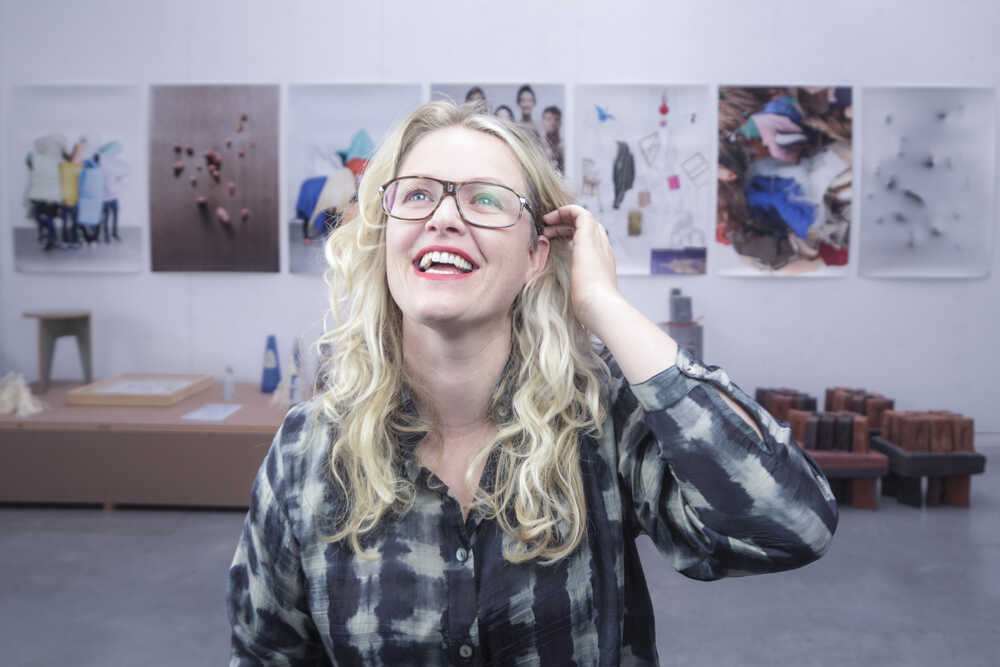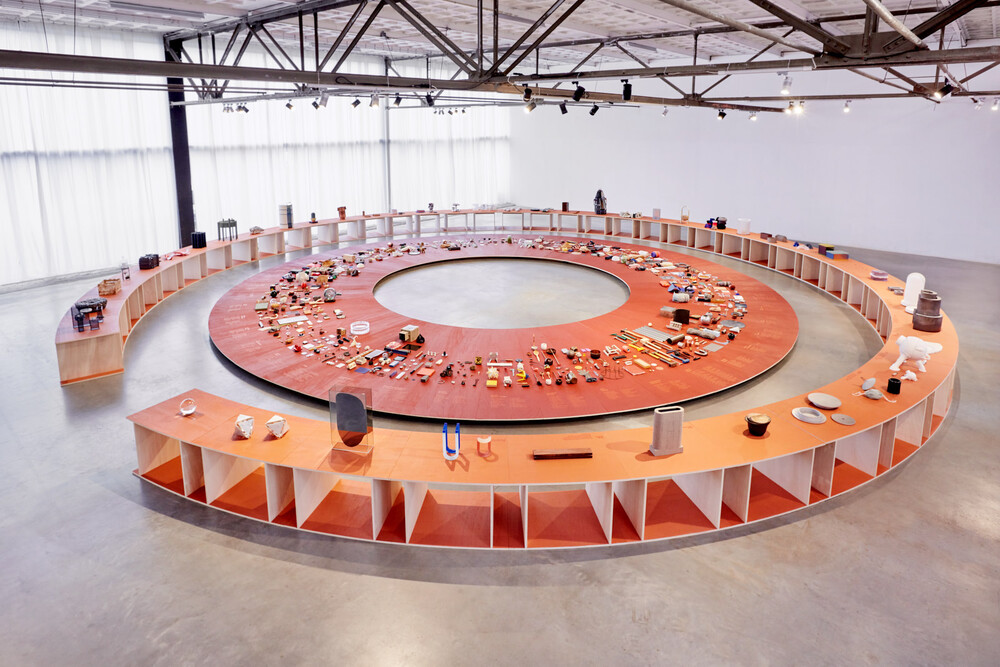Wendy Plomp
Wendy Plomp (Design Academy Eindhoven class of 2005) started Dutch Invertuals in 2009 with the idea of presenting to the world newer ways of thinking, designing and living.
With over a decade’s worth of curated exhibitions and collaborations in Eindhoven, Milan and around the world, Dutch Invertuals is now a prominent name on the global design scene, known for championing young, innovative designers and thoughtful presentations. Litty Salas (2021 graduate of DAE’s Critical Inquiry Lab) spoke to Wendy Plomp about her journey and how her experience at DAE helped shape Dutch Invertuals.


→Litty Salas: Can you tell us a bit about Dutch Invertuals and how you started it?
Wendy Plomp: After graduating from DAE, I was working as a freelancer and together with my partner Remco van de Craats of studio Edhv we were constantly trying to translate research into interesting new concepts from a wider perspective, forging new identities. While working for a client in Milan, I was requested to showcase Dutch design, which I was (and am) really enthusiastic about. I then started to scout designers who worked with different mediums and together we discussed how we could create an upside-down inside-out world. We came up with all sorts of names that played with the concept of inversion and ended up with Invertuals. And we put Dutch in front of it because Dutch design was well known and we wanted to be a representative.
→LS: What was your vision for Dutch Invertuals and has it changed over time?
WP: The vision behind Dutch Invertuals was very clear from the beginning. It started with my interest in presenting the design field as a very diverse group of people, selling a story for themselves and all together forming a bigger story. I was really interested in different cultures, different ways of thinking and making and I believed that together we can tell more and achieve more than doing it individually. Together with researchers and designers, we could design possible new futures and create these new stories.
→LS: Could you tell us a bit more about some of the work you have done and what were some of the challenges you faced?
WP: I look at our work like chapters in a book that is still being written. We had an exhibition called Conflict (2012) because there was a lot happening in the world and through conflict we got transformation and so we did one on Transformation (2013) and so on. These chapters came about intuitively as a reflection on the world. They talk about society and a new way of living that we need to discover and actively encourage. Objects for a New Kind of Society (2021) is the latest exhibition we have produced in collaboration with the graduates of Design Academy.
The challenges lie in constantly encouraging new groups of designers to achieve better results and the communication and networking needed to keep these designers together. It takes a lot of energy to guide them, keeping them motivated and active. We had gone from a very individualistic approach to a more collaborative one and now after Covid-19, you can see that designers are becoming more individualistic again and it is really important for us to work together again, work as a collective to achieve good things, which can be quite challenging.
→LS: How would you define your relationship with design and how has it evolved over the years?
WP: Of course I have grown as a designer, but I am more of a researcher. With Dutch Invertuals, I moved away from the role of the designer to someone leading the story through different design disciplines, trying to make a change in the world. I like to create stories with a certain vision in mind and I direct others who have the quality to work with materials to produce these visions and achieve desired results. I feel I am still a designer but I design stories in a way that makes some change in the world.
And these stories are not just stories, but rather a critical reaction on society. Last year, we had this discussion about harvesting new materials (in the Dutch Invertuals Academy’s True Matters programme) and how can we as humans find new directions and stay flexible, which I think is the fundamentals of being a designer. We need to be more conscious and aware of the materials, the techniques we use, the mass production—a lot of things that we in the West should take accountability for.
→LS: After more than a decade of Design Invertuals, how do you look back on your experience at DAE and what does it mean for you to be an alumnus?
WP: The Academy was very different when I was studying there. Back then it focused more on product design, creating objects with various techniques and did not focus as much on research as it does today. I had to really find and fight my way through the Academy. I was very inspired by Li Edelkoort, the former director of DAE, and how she translated research into future scenarios and that is what gave me a goal and direction I could aim for within the Academy. It was a journey and most of what I learned there I still use now. I even collaborate with a lot of people I met during my time there and even with recent graduates.
And now the Academy has become bigger. It is always nice to see the graduation show with all its different characters, different mentalities of different cultures still inspiring new designers. It makes me proud of the value of the Academy. It is very important for the designers graduating from DAE to know its value.

